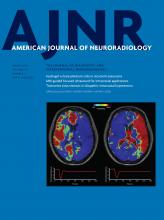ABBREVIATIONS:
- VHL
- Von Hippel Lindau
- pVHL
- VHL protein
- HIF
- hypoxia-inducible factor
Von Hippel-Lindau (VHL) disease is a rare, autosomal dominant syndrome that is associated with the development of tumors in a variety of organ systems, most commonly hemangioblastoma of the central nervous system and retina.1 The ocular manifestations of the disease were first independently described by 2 ophthalmologists, Treacher Collins in 18942 and Eugene von Hippel in 1904.3 Both recognized families with angiomatous retinal growths and described them in the medical literature. In 1927, Arvid Lindau,4 a Swedish pathologist, recognized that these retinal lesions were associated with an increased risk of developing hemangioblastomas of the central nervous system. Since then, VHL disease has been associated with many other lesions, including clear cell renal carcinoma, pheochromocytoma, endolymphatic sac tumors, epidydimal and broad ligament cystadenomas, and islet-cell tumors.5 The prevalence of VHL disease is estimated to be between 1 in 31,000 and 1 in 53,000.6,7
Diagnosis
The diagnosis of VHL is often made by using clinical criteria. Patients with a family history of VHL are diagnosed with the disease in the presence of 1 additional tumor—a CNS hemangioblastoma, pheochromocytoma, or clear cell renal carcinoma. Those without a family history must have 2 CNS hemangioblastomas or 1 CNS hemangioblastoma with either a pheochromocytoma or clear cell renal carcinoma.8,9 With the current understanding of the genetic basis for VHL disease and the availability of molecular genetic testing, the diagnosis of VHL disease may be made in individuals who do not satisfy the clinical diagnostic criteria.
Despite the increased availability and detection rate of genetic testing, negative results are not always definitive. Up to 20% of tumors in individuals with VHL disease result from de novo mutations, and these individuals do not have a family history of the disease.10 Furthermore, many de novo mutations result in mosaicism, in which patients may have clinical signs of the disease but test negative genetically for it because not all tissues carry the mutation.11
Molecular Genetics
VHL disease is an autosomal dominantly inherited disorder with marked variability in penetrance and phenotype. The VHL gene is located on the short arm of chromosome 3 (3p25–26) with its coding sequence represented in 3 exons.12,13 The gene encodes 2 protein isoforms, a full-length 30-kDa protein (pVHL30) and a smaller 19-kDa protein (pVHL19), generated by alternative translation initiation.14 The VHL gene is evolutionarily conserved and is expressed in all organ systems, not exclusively those affected by VHL disease.15
Patients with VHL disease have an inactivating germline mutation in 1 copy of the VHL gene and 1 normally functioning wild type allele. Tumor development depends on mutation of the remaining wild type allele in a susceptible target organ. A wide variety of germline mutations have been identified, but the largest group consists of deletions that alter exon sequences.16 The remaining mutations are due to nonsense mutations or missense substitutions. A complex classification system has been described to correlate genotype and phenotype, but it is less useful for clinical management because an individual may move from one subtype to another.17
Function of the Tumor Suppressor Protein
The VHL gene product is a tumor-suppressor protein that influences many cellular pathways but is best characterized by its function in the oxygen-sensing pathway. The VHL protein (pVHL) has a critical role in regulating a transcription factor called hypoxia-inducible factor (HIF). In the presence of functioning pVHL and normoxic conditions, pVHL binds to a subunit of HIF and acts as a ubiquitin ligase, leading to the destruction of HIF via proteasomal degradation. In the presence of functioning pVHL and hypoxic conditions, pVHL is unable to form a ubiquitin ligase and HIF is not degraded. This outcome allows HIF to induce transcription of genes involved in diverse processes including angiogenesis, proliferation, metabolism, and apoptosis (eg, VEGF, PDGFβ, TGFα). In the presence of nonfunctioning pVHL, HIF will not be degraded regardless of oxygen conditions. This feature allows the inappropriate overproduction of hypoxia-inducible messenger RNAs and unregulated cell growth—the hallmark of pVHL-defective cells.13,18⇓–20
Role of Imaging
Imaging plays a crucial role in the diagnosis and surveillance of VHL disease, particularly with identification of CNS hemangioblastomas. These are the most common tumors in VHL disease, affecting 60%–80% of all patients and are the presenting feature in approximately 40% of cases.11,21,22 VHL disease accounts for approximately one-third of patients with CNS hemangioblastomas. The most common site is the cerebellum (44%–72%), followed by the spinal cord (13%–50%), brain stem (10%–25%), and supratentorial structures (1%).18,23
Imaging is also crucial in the identification and surveillance of lesions outside the CNS, including the pancreas, kidneys, adrenal glands, and reproductive organs. Identification of renal carcinoma is of particular importance because it is the major malignant neoplasm of VHL disease and one of the leading causes of mortality.19 Although retinal hemangioblastomas are the second most common tumor in VHL disease, they are typically only detectable by examination of the dilated eye.18
Screening is critical in all patients with VHL disease regardless of symptoms because lesions are treatable. Indeed, the morbidity and mortality of VHL disease has been significantly reduced during the past 20 years due to advanced screening and surgical techniques.6 Particular screening guidelines vary among different centers but typically include renal, brain, and spinal cord imaging at regular intervals.24,25
References
- © 2017 by American Journal of Neuroradiology







